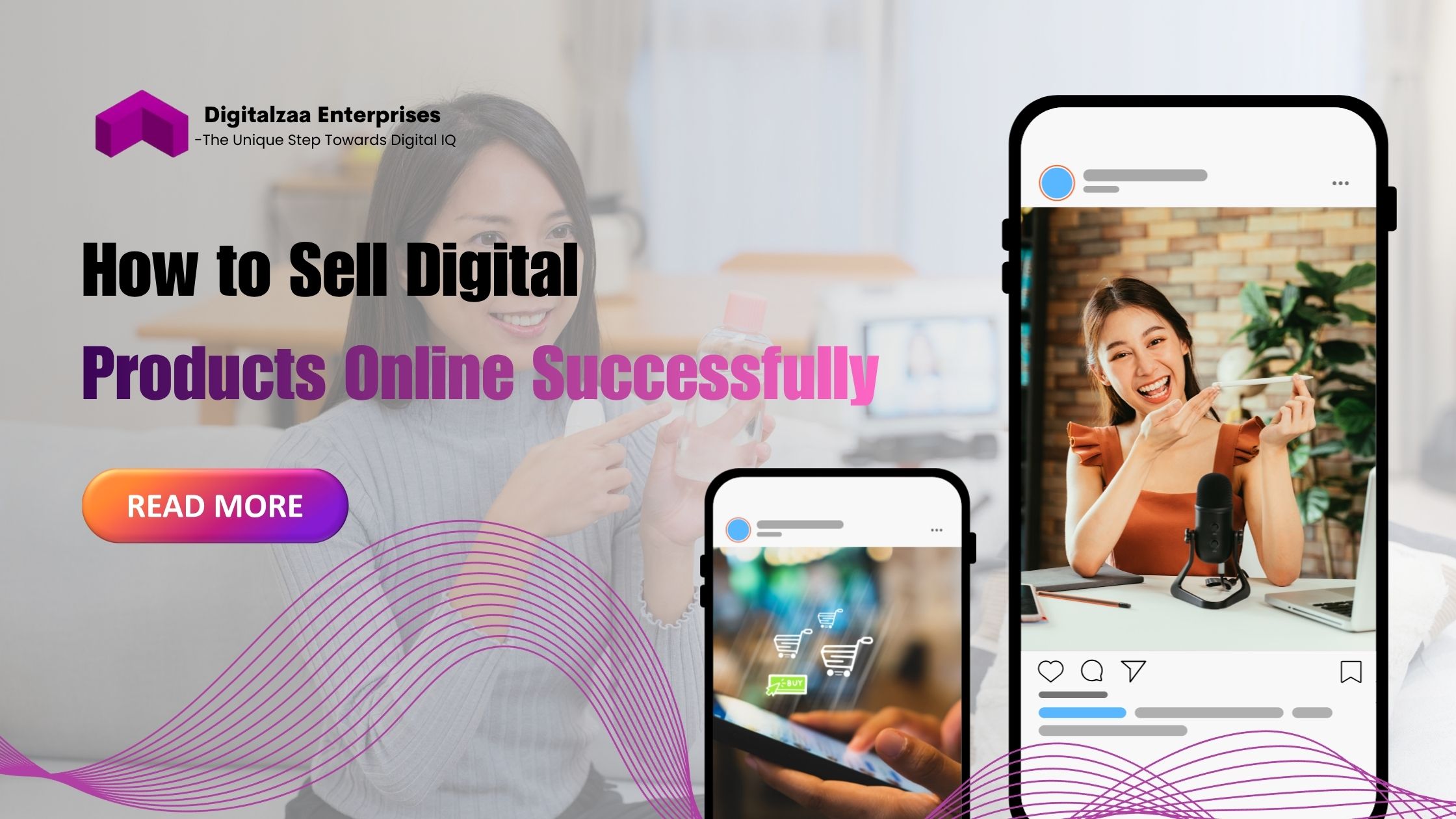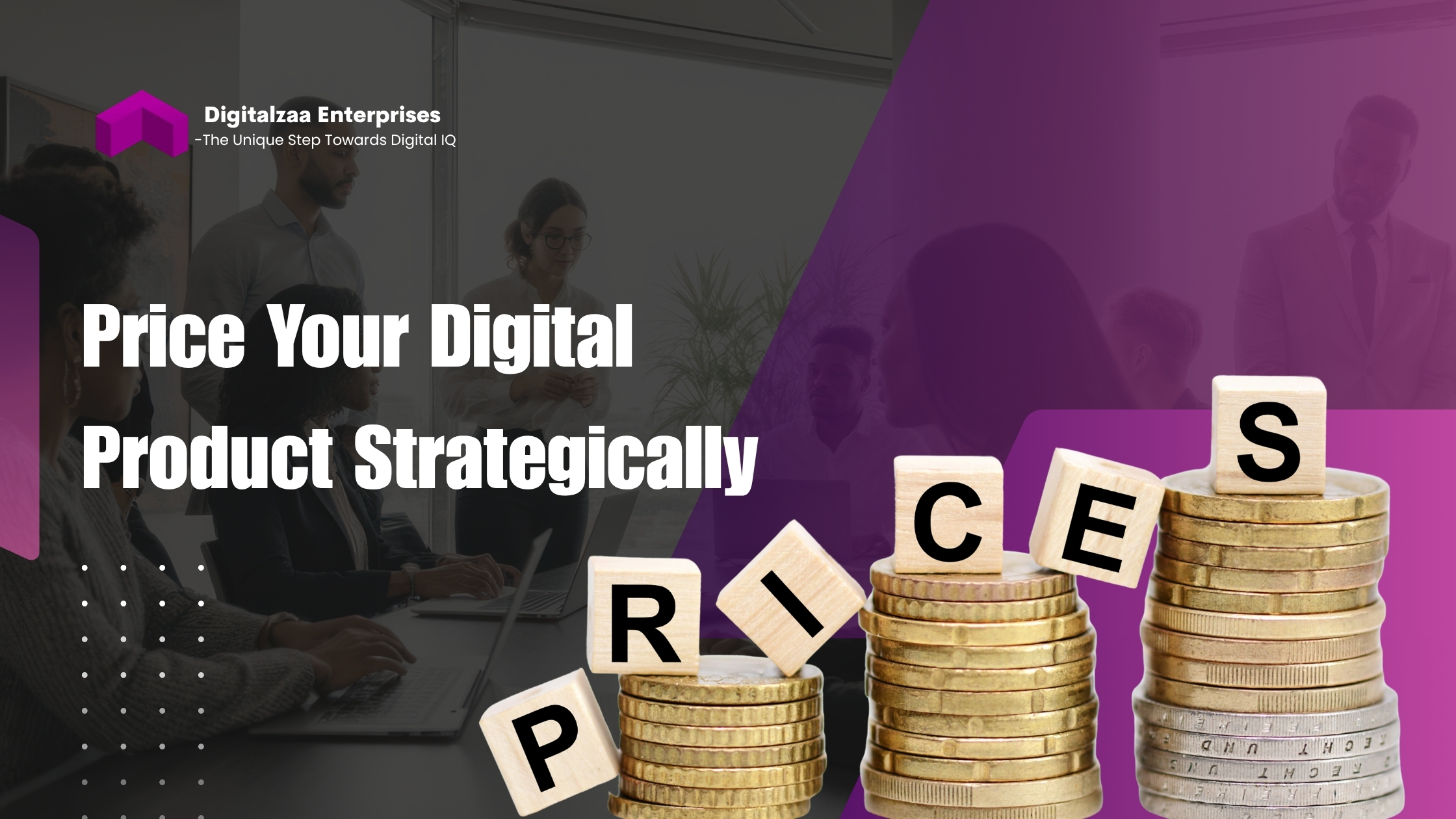How to Sell Digital Products Online Successfully

In today’s digital economy, selling digital products has become one of the most profitable and sustainable business models. Unlike physical goods, digital products require no inventory, shipping, or restocking. Once created, they can generate income repeatedly — turning your expertise, creativity, or skills into a continuous revenue stream. Whether you're selling eBooks, online courses, templates, or software, learning how to sell digital products online successfully can transform your brand into a thriving online business.
This detailed Pinterest blog will walk you through the step-by-step process of selling digital products online — from choosing the right niche and creating your product to marketing it effectively and automating your sales for long-term success.
The Power of Digital Products
Digital products are intangible assets that can be downloaded or accessed online. Common examples include:
- eBooks and guides
- Online courses and workshops
- Templates (design, social media, business, resume, etc.)
- Membership sites
- Audio products (music, podcasts, meditations)
- Software and mobile apps
- Stock photos, videos, or presets
The appeal lies in scalability. Once the product is created, you can sell it to an unlimited number of customers without additional production costs. It’s the ultimate “create once, sell forever” model.
Step 1: Identify a Profitable Niche
To sell digital products successfully, you need to solve a problem or fulfill a demand in a specific niche. The best products are born from purpose and need.
Ask yourself:
- What problems can I help people solve?
- What knowledge or skills do I already have that people are willing to pay for?
- Is there a consistent demand in this niche?
Some profitable digital product niches include:
- Personal finance and investing
- Health, wellness, and fitness
- Productivity and time management
- Design and branding
- Marketing and business growth
- Self-development and mindset
Use keyword tools, forums, and Pinterest trends to validate your idea. Pinterest, in particular, is a goldmine for discovering trending topics and product ideas because users actively search for solutions.
Step 2: Create a High-Value Digital Product
Once you’ve chosen your niche, the next step is to create your product. The key is value — your product should make someone’s life easier, better, or faster.
Tips for Creating Quality Digital Products:
- Keep it simple but impactful — don’t overwhelm your audience.
- Make your product visually appealing and easy to use.
- Focus on solving one specific problem well.
- Include bonuses, workbooks, or templates to add extra value.
Tools for creating digital products:
- Canva for templates and eBooks
- Notion or Google Docs for planners and workbooks
- Teachable, Thinkific, or Podia for online courses
- Gumroad or Etsy for selling digital downloads
- ClickFunnels for sales pages and funnels
Remember, your first product doesn’t have to be perfect — it just needs to deliver clear, tangible results for your audience.
Step 3: Choose the Right Platform to Sell
The platform you choose will affect how you sell, promote, and automate your business.
Popular platforms for digital products:
- Etsy: Great for templates, planners, and creative digital downloads.
- Gumroad: Perfect for creators selling eBooks, guides, or digital art.
- Shopify: Ideal for entrepreneurs who want full control over their digital store.
- Podia, Teachable, or Kajabi: Best for online courses and memberships.
- Payhip: Simple, cost-effective solution for selling PDFs and files.
Each platform has unique benefits. Choose one that aligns with your target audience and the type of digital products you’re offering.
Step 4: Price Your Digital Product Strategically

Pricing digital products can be tricky. The right price communicates value and ensures you’re compensated fairly for your effort.
Consider these pricing strategies:
- Value-based pricing: Charge based on the transformation your product delivers.
- Tiered pricing: Offer different versions (basic, standard, premium).
- Low-ticket entry products: Attract new customers with affordable options ($10–$30).
- High-ticket offers: Premium courses or bundles ($100–$1000+) for serious buyers.
Always remember — people don’t just buy the product; they buy the results it helps them achieve.
Step 5: Build a Strong Brand Presence
Branding builds trust and credibility. It makes your digital product stand out in a crowded marketplace.
Your brand identity should include:
- A clear mission and message
- Consistent color palette and design
- A memorable logo and product visuals
- A trustworthy and professional website
Your social media presence — especially on platforms like Pinterest, Instagram, and LinkedIn — plays a huge role in driving awareness.
Pinterest, in particular, is a visual search engine, making it one of the best tools for promoting digital products.
Step 6: Market Your Digital Product Effectively
Once your product is ready, it’s time to attract buyers. Marketing is where success happens.
Effective marketing strategies include:
- Pinterest Marketing: Create visually appealing pins for your product, blog posts, and lead magnets. Use keywords and link directly to your product page.
- Email Marketing: Build an email list with free resources or mini-guides. Use newsletters to nurture leads and promote offers.
- Social Media Campaigns: Share behind-the-scenes creation processes, testimonials, and product use-cases.
- Content Marketing: Write blogs or create YouTube videos that solve related problems, and subtly promote your product.
- Affiliate Partnerships: Allow others to promote your product for a commission. This expands reach without additional marketing costs.
- Paid Ads: Platforms like Facebook, Pinterest, and Instagram Ads can drive targeted traffic directly to your product page.
Step 7: Automate and Scale Your Business
Once you start generating sales, automation helps you scale effortlessly.
Automation tools you can use:
- Email automation: ConvertKit or Mailchimp for drip campaigns.
- Sales automation: Use Zapier or HubSpot for workflow integration.
- Social media scheduling: Plan posts using Tailwind or Buffer.
- Customer support: Use chatbots or templates for common questions.
Automation not only saves time but also creates a seamless customer experience — making your business look more professional.
Step 8: Collect Feedback and Improve
Customer feedback helps refine your products and build stronger relationships.
Ask your buyers:
- How did the product help you?
- What could be improved?
- Would you recommend it to others?
Use this feedback to create updates, new versions, or complementary products. Continuous improvement keeps your brand relevant and competitive.
Step 9: Diversify Your Digital Product Line
Once your first product succeeds, build a suite of related offers. For instance:
- If you sell a course, create an eBook or workbook as a companion.
- If you offer templates, bundle them for different niches.
- If you provide a membership, add exclusive downloadable resources.
This increases your average customer value and encourages repeat purchases.
Step 10: Build Long-Term Relationships with Your Audience

Your audience is your biggest asset. Instead of chasing new customers constantly, focus on retaining and nurturing your existing ones.
Tips to build loyalty:
- Send regular updates and free tips.
- Offer loyalty discounts or referral programs.
- Engage through communities, webinars, or live sessions.
When customers trust your brand, they become your biggest advocates — sharing your products and helping your business grow organically.
Conclusion
Selling digital products online is one of the smartest ways to generate passive income and build long-term financial freedom. It allows you to monetize your skills, automate your sales, and impact thousands of people globally. The process requires strategy, creativity, and consistency — but once set up, it can grow exponentially.
If you’re ready to start your journey and learn how to market and automate your digital products effectively, explore the Pinterest pin below for visual ideas, marketing templates, and growth strategies designed to help digital creators like you succeed.
👉 Click here to explore the Pinterest pin for actionable insights:
https://pin.it/2deZJNaSo


